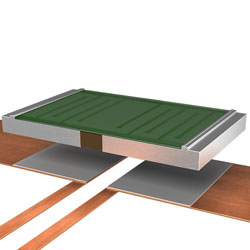
In rapid switching operations in power electronics, such as the automotive industry, voltage spikes can cause inductance that damages or destroys sensitive downstream components in the circuit. A so-called RC buffer shunt can suppress these voltage peaks, which consume excess energy outward. Isabellenhutte has created a powerful low-ohmic buffering shunt, THE SMT-V, with extremely high pulse power ratings.
The RC element consists of a resistor and capacitor in series. The resistor converts the energy released by the capacitor into heat. Buffers are used with contactors, power relays, thyristors/transistors, IGBT, MOSFET or bipolar transistors. Special IGBT, triode and MOSFET are used to accurately control the motor. The fast switching operation between IGBT and MOSFET needs to ensure this
However, the design and materials of the new SMT-V are better able to withstand this particular pulse load. This development resulted from customer requests that there were not enough standard components with this resistance value available. The unique feature of this buffer shunt compared to the company's other shunt series is that it is not used for current measurement, but is specifically designed to absorb high pulse loads. The company developed the SMT-V with a 17.5mOhm low resistance and minimal compact design. It is based on the existing current measuring resistor SMT, which has a very large copper outrigger that allows excellent heat dissipation from the respective components, already has a high pulse power rating and long term stability.
High pulse power ratings, nearly twice as high as the MANGANIN resistors used in current measurement resistors, can be achieved with NOVENTIN, an internal resistance material. The basic structure of the component remains the same. Only the thin film design has been optimized, and the resistive materials have changed accordingly. This allows for higher pulse loads and power losses at resistors.
The device can absorb 2.5J pulse energy with a pulse duration of 0.1s and a terminal temperature of 120℃. It can absorb several 50 pulses with corresponding gap time during its life cycle. This is equivalent to the power loss of one 25W pulse. For example, in a 48V MHEV AC/DC converter, an example of a protection circuit application could use a buffered shunt as part of a semiconductor protection circuit.